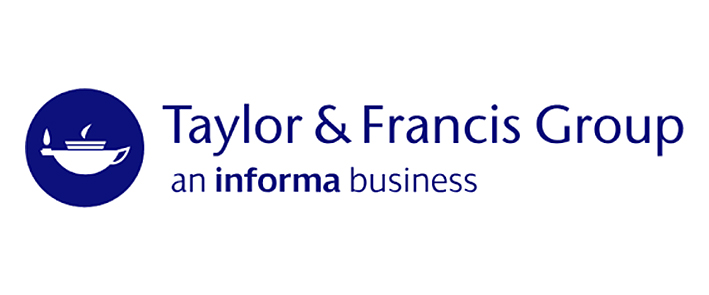MARC details
| 000 -LEADER |
|---|
| fixed length control field |
04332nam a22002655i 4500 |
| 001 - CONTROL NUMBER |
|---|
| control field |
136582 |
| 003 - CONTROL NUMBER IDENTIFIER |
|---|
| control field |
ISI Library, Kolkata |
| 005 - DATE AND TIME OF LATEST TRANSACTION |
|---|
| control field |
20160222123919.0 |
| 008 - FIXED-LENGTH DATA ELEMENTS--GENERAL INFORMATION |
|---|
| fixed length control field |
140626s2014 mau 000 0 eng |
| 020 ## - INTERNATIONAL STANDARD BOOK NUMBER |
|---|
| International Standard Book Number |
9780123948489 |
| 040 ## - CATALOGING SOURCE |
|---|
| Original cataloging agency |
ISI Library |
| Language of cataloging |
eng |
| 082 04 - DEWEY DECIMAL CLASSIFICATION NUMBER |
|---|
| Classification number |
551.22 |
| Edition number |
23 |
| Item number |
W995 |
| 100 1# - MAIN ENTRY--PERSONAL NAME |
|---|
| Personal name |
Wyss, Max. |
| 245 10 - TITLE STATEMENT |
|---|
| Title |
Earthquake hazard, risk and disasters / |
| Statement of responsibility, etc |
Max Wyss. |
| 260 ## - PUBLICATION, DISTRIBUTION, ETC. (IMPRINT) |
|---|
| Place of publication, distribution, etc |
Amsterdam : |
| Name of publisher, distributor, etc |
Elsevier, |
| Date of publication, distribution, etc |
c2014. |
| 300 ## - PHYSICAL DESCRIPTION |
|---|
| Extent |
xxiv, 582 p. : |
| Other physical details |
illustrations (chiefly color), maps (chiefly color) ; |
| Dimensions |
24 cm. |
| 490 0# - SERIES STATEMENT |
|---|
| Series statement |
Hazards and disasters series |
| 504 ## - BIBLIOGRAPHY, ETC. NOTE |
|---|
| Bibliography, etc |
Includes bibliographical references and index. |
| 505 0# - FORMATTED CONTENTS NOTE |
|---|
| Formatted contents note |
1.Remote sensing for disaster response: a rapid, image-based perspective / Charles Huyck, Enrica Verrucci and John Bevington --<br/>2. The capabilities of earth observation to contribute along the risk cycle / H. Taubenbock --<br/>3. Disaster-risk reduction through the training of masons and public information campaigns: experience of SDC's "Competence Centre for Reconstruction" in Haiti / Tom Schacher --<br/>4. The most useful countermeasure against giant earthquakes and tsunamis: what we learned from interviews of 164 tsunami survivors / Mizuho Ishida and Masataka Ando --<br/>5. Aggravated earthquake risk in South Asia: engineering versus human nature / Roger Bilham --<br/>6. Ten years of real-time earthquake loss alerts / Max Wyss --<br/>7. Forecasting seismic risk as an earthquake sequence happens / J. Douglas Zechar, Marcus Herrmann, Thomas van Stiphout and Stephen Wiemer --<br/>8. How to render schools safe in developing countries? / Amod M. Dixit, Surya P. Acharya, Surya N. Shrestha and Ranjan Dhungel --<br/>9. The socioeconomic impact of earthquake disasters / James E. Daniell --<br/>10. The contribution of paleoseismology to earthquake hazard evaluations / Mustapha Meghraoui and Kuvvet Atakan --<br/>11. The role of microzonation in estimating earthquake risk / Imtiyaz A. Parvez and Philippe Rosset --<br/>12. Why are the standard probabilistic methods of estimating seismic hazard and risks too often wrong / Giuliano Panza,Vladimir G. Kossobokov, Antonella Peresan and Anastasia Nekrasove --<br/>13. The continued utility of probabilistic seismic-hazard assessment / Mark W. Stirling --<br/>14. Precarious rocks: providing upper limits on past ground shaking from earthquakes / John G. Anderson, Glenn P. Biasi, and James N. Brune --<br/>15. Quantifying improvements in earthquake-rupture forecasts through testable models / Danijel Schorlemmer and Matthew C. Gerstenberger --<br/>16. Duties of earthquake forecast: cases and lessons in China / Zhongliang Wu --<br/>17. The experience of real-time earthquake predictions on Kamchatka / Gennady Sobolev and Victor Chebrov --<br/>18. Times of increased probabilities for occurrence of hypothesis testing in real time / Vladimir G. Kossobokov --<br/>19. Review of the nationwide earthquake early warning in Japan during its first five years / Mitsuyuki Hoshiba --<br/>20. To what extent can engineering reudce seismic risk? / Stavros V. Tolis --<br/>21. Decision making under uncertainity: insuring and reinsuring earthquake risk / Geor W. Michel --<br/>Index. |
| 520 ## - SUMMARY, ETC. |
|---|
| Summary, etc |
Earthquake Hazard, Risk, and Disasters presents the latest scientific developments and reviews of research addressing seismic hazard and seismic risk, including causality rates, impacts on society, preparedness, insurance and mitigation. The current controversies in seismic hazard assessment and earthquake prediction are addressed from different points of view. Basic tools for understanding the seismic risk and to reduce it, like paleoseismology, remote sensing, and engineering are discussed. * Contains contributions from expert seismologists, geologists, engineers and geophysicists selected by a world-renowned editorial board* Presents the latest research on seismic hazard and risk assessment, economic impacts, fatality rates, and earthquake preparedness and mitigation* Includes numerous illustrations, maps, diagrams and tables addressing earthquake risk reduction* Features new insights and reviews of earthquake prediction, forecasting and early warning, as well as basic tools to deal with earthquake risk |
| 650 #0 - SUBJECT ADDED ENTRY--TOPICAL TERM |
|---|
| Topical term or geographic name as entry element |
Earthquake hazard analysis. |
| 650 #0 - SUBJECT ADDED ENTRY--TOPICAL TERM |
|---|
| Topical term or geographic name as entry element |
Earthquakes |
| General subdivision |
Environmental aspects. |
| 650 #0 - SUBJECT ADDED ENTRY--TOPICAL TERM |
|---|
| Topical term or geographic name as entry element |
Earthquakes |
| General subdivision |
Safety measures. |
| 942 ## - ADDED ENTRY ELEMENTS (KOHA) |
|---|
| Source of classification or shelving scheme |
Dewey Decimal Classification |
| Koha item type |
Books |


























